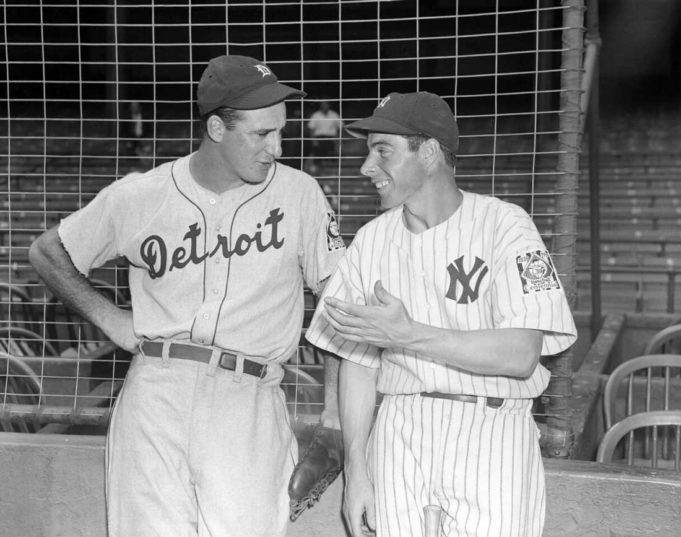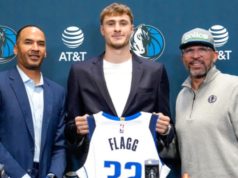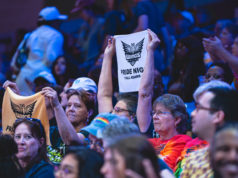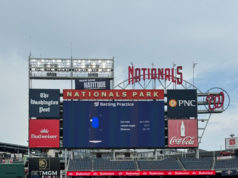If you were a young Jewish boy newly arrived in the United States in the early 20th century, you might have looked and talked differently from your schoolmates. You wore a small circular cap on the back of your head. How would you have tried to fit in?
For many such boys, adjustment to America involved wearing baseball caps as well as yarmulkes.
That’s the message of Chasing Dreams: Baseball and Becoming American, a multimedia exhibit on display through March 5 at Congregation Ahavath Sholom.
“What the immigrants of the early 1900s determined was if you really wanted to be American, you needed to learn about baseball,” explained Rich Hollander, who spearheaded bringing the exhibit to the Fort Worth synagogue from the Philadelphia Museum of American Jewish History.
The most prominent portion of the display consists of a series of two-sided panels featuring large photos and text related to the ways Jews and other minorities became a part of baseball. Text from the first panel declares that baseball “represents a shared American identity.” Videos about baseball’s cultural richness reinforce the message. They feature comments from prominent Jewish and minority participants in the game, including the Rangers’ Jewish general manager, Jon Daniels.
Hollander had seen a TV news story about the exhibition and contacted the Philadelphia museum about arranging a showing in Texas. As president of Tarrant County B’nai B’rith, he presented the concept to local chapter of the national Jewish service organization. They decided to provide the money and manpower necessary to bring Chasing Dreams to Cowtown.
An iPad display allows visitors to look up every Jewish player who played in the majors. On Friday, Rick Weintraub of Arlington had come to see the exhibit with his friend and his grandson. He asked Hollander to retrieve the information on his distant cousin Phil Weintraub, who played in the 1930s and 1940s.
Rick was born in 1937 and grew up in New York City as a Brooklyn Dodgers fan. He confirmed that the exhibit got it right about the importance of baseball to Jewish boys his age.
“When you were a kid growing up in Brooklyn, baseball was your second religion,” he said.
The man Hollander considers his baseball hero once placed the religion they share ahead of the game they both love. Sandy Koufax declined to pitch Game 1 of the 1965 World Series when it fell on the same day as Jewish holy day Yom Kippur. He has a prominent place in the exhibit and in Hollander’s memory: “He said to me, ‘If you’re Jewish, you can be a baseball player.’ I wasn’t good enough to be a [professional] baseball player, but you could be a baseball player.”
Hollander took pleasure in noting that Israel had qualified to play in the 2017 World Baseball Classic, the country’s first appearance in the main round of the quadrennial competition. The tournament website indicates some 3,000 Israelis of all ages participate in the sport. It seems that in addition helping immigrants adjust to life in the U.S., baseball makes a pretty good export, too.
On Blotch at Fwweekly.com, you can read my take on why it made sense to write about the exhibit during a week that includes Martin Luther King, Jr. Day and Inauguration Day.
Chasing Dreams: Baseball and Becoming American
10am-5pm Tue-Thu; 10am-2pm Fri; noon-6pm Sun. Congregation Ahavath Sholom, 4050 South Hulen St, FW. Free-$5. 817-909-4354 43












